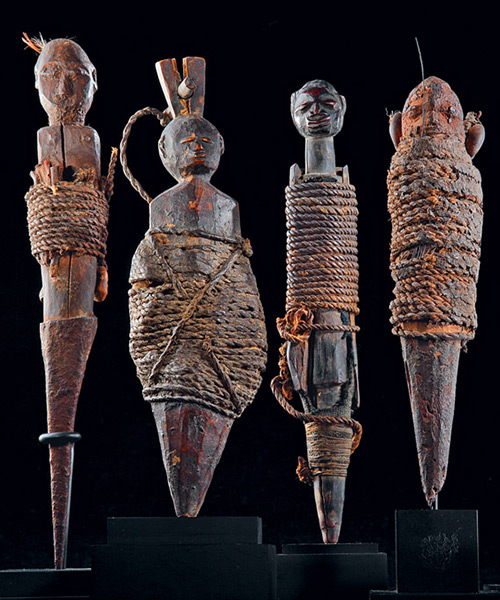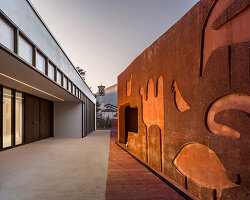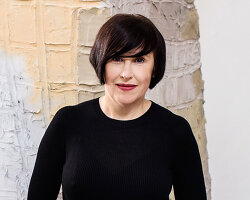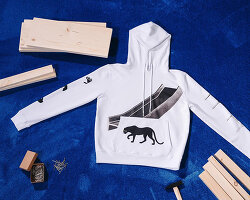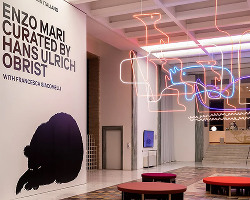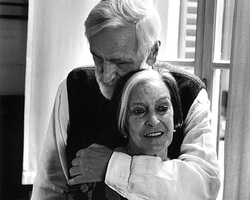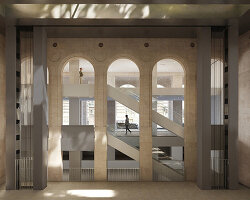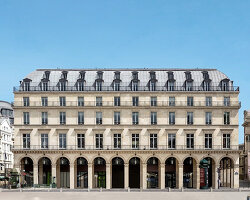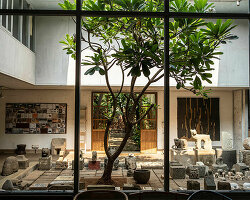‘vodun’ african voodoo
fondation cartier, paris, france
until 25 september, 2011
the practice of vodun has always been confined to an intellectual elite. its objects or fetishes can only act once they have been rendered sacred. they are the material signs of divine affirmation and their longevity depends on their use. the fondation cartier pour l’art contemporain presents for the first time an exceptional group of vodun objects from the collection anne and jacques kerchache, found in the birthplace of voodoo — currently known as the republic of benin. approximately hundred objects are on show. designboom visited the opening of the exhibition and directly reports from it.
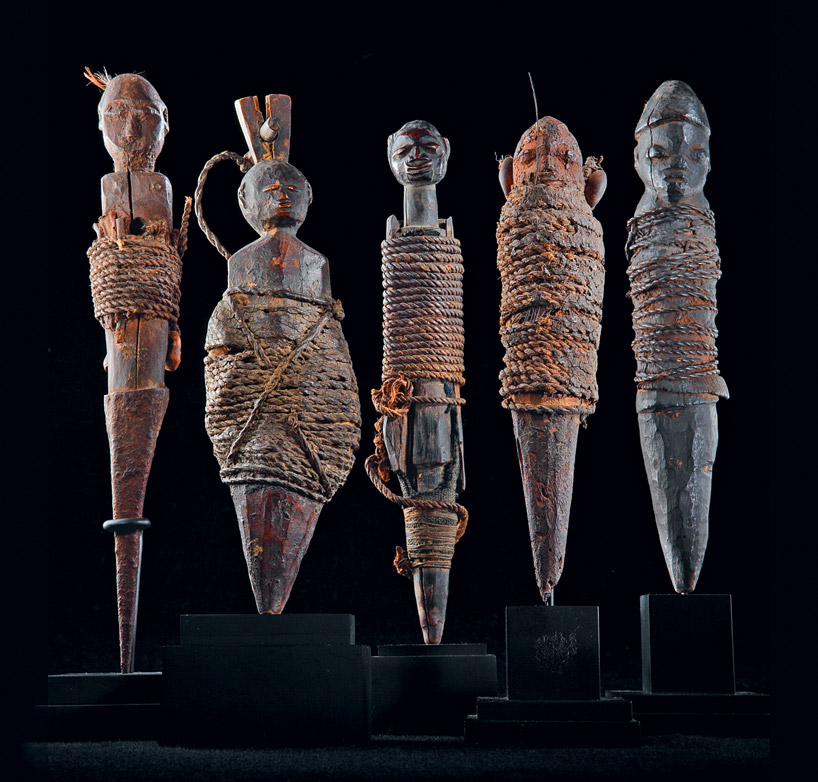
nago and fon vodun sculptures, benin (23.5 x 4.5 x 5 cm, 18.5 x 5.5 x 5 cm, 20 x 4 x 3 cm, 18 x 4 x 5.5 cm, 20 x 4 x 4 cm) | wood, rope, clay, sacrificial patina | collection anne and jacques kerchache | photo © yuji ono
(main image) fon vodun sculpture, benin (43 x 14 x 11 cm) | wood, sacrificial patina | courtesy robert t. wall family | photo © yuji ono
the most common and prototypical of the bocio genre, are bla-bocio whose surface have been bound tightly with cord. bondage is associated with a range of emotionally charged ideas, the most powerful of which is death. works of this genre are also respond to problems such as imprisonment, impotence and personal pain. while often related to negative ideas, cords are also identified with positive values such as life. for example pregnant woman will often wear special cords around their hips as a protection against miscarriage. the cords displayed in bocio sculptures allude to similar ideas of security, life and family continuity.
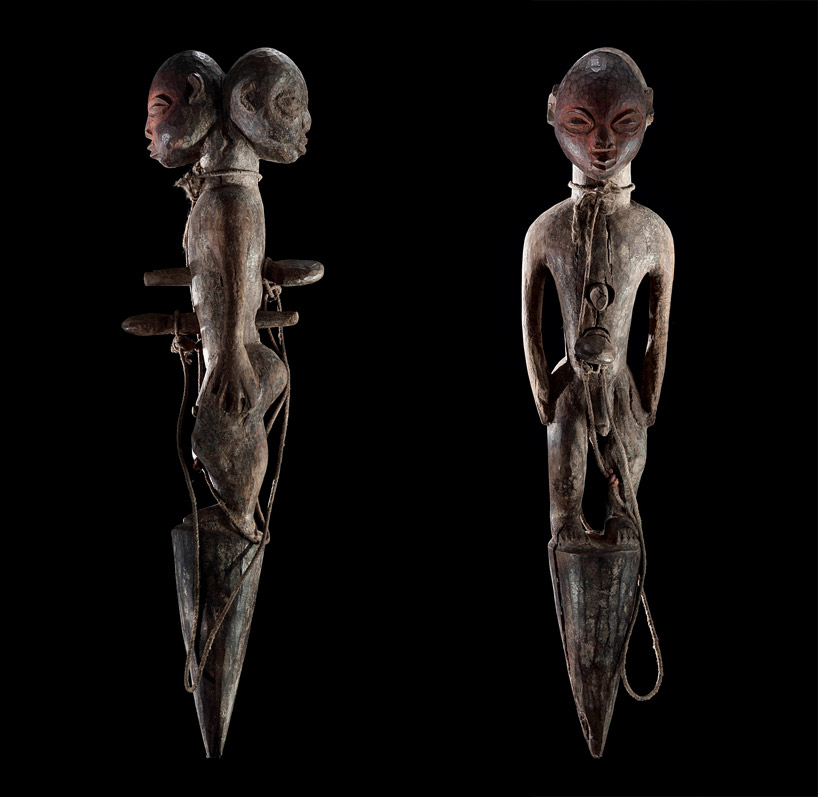
fon vodun object, benin (34 x 6.5 x 9.5 cm)
wood, rope, sacrificial patina
collection anne and jacques kerchache
photo © yuji ono
pierced or pegged bocio secure the spoken word, and have the power of activating or deactivating speech. a peg placed in the head may cause speechlessness, loss of memory and lack of awareness, meanwhile a peg placed in the chest is said to promote well-being and calming of the heart. a peg placed in the thighs or buttocks may lead to immobility or incapacity of movement. secured to the arms, pegs may stop another’s offensive action. double heads are an important characteristic, they are aimed at individuals and their doubles who may return after death.
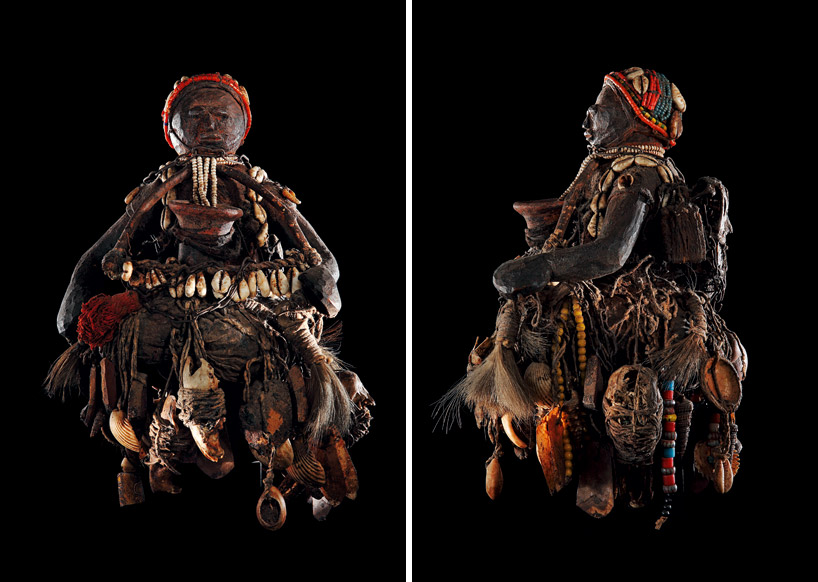
fon vodun sculpture, benin (30 x 18 x 17 cm)
wood, rope, bones, duck skull, metal, terracotta, shells, beads, feathers, cloth, hair, plants
collection michel propper
photo © yuji ono
swollen or pregnancy bocio include various bulges, humps or mounds of material, attached to various parts of the body. an anthropomorphic assemblage of materials such as ropes, bones, shells, and pottery, voodoo sculptures assume a critical role in the practice of this ancient religious cult, still active today from the coasts of togo to western nigeria. covered with a thick layer of matter includes earth, palm oil and powder, these strange and uncanny sculptures emanate qualities of tension and foreboding. their ambiguous aesthetics are closely linked to their role in both protecting their owners from danger and harming those responsible for their difficulties.
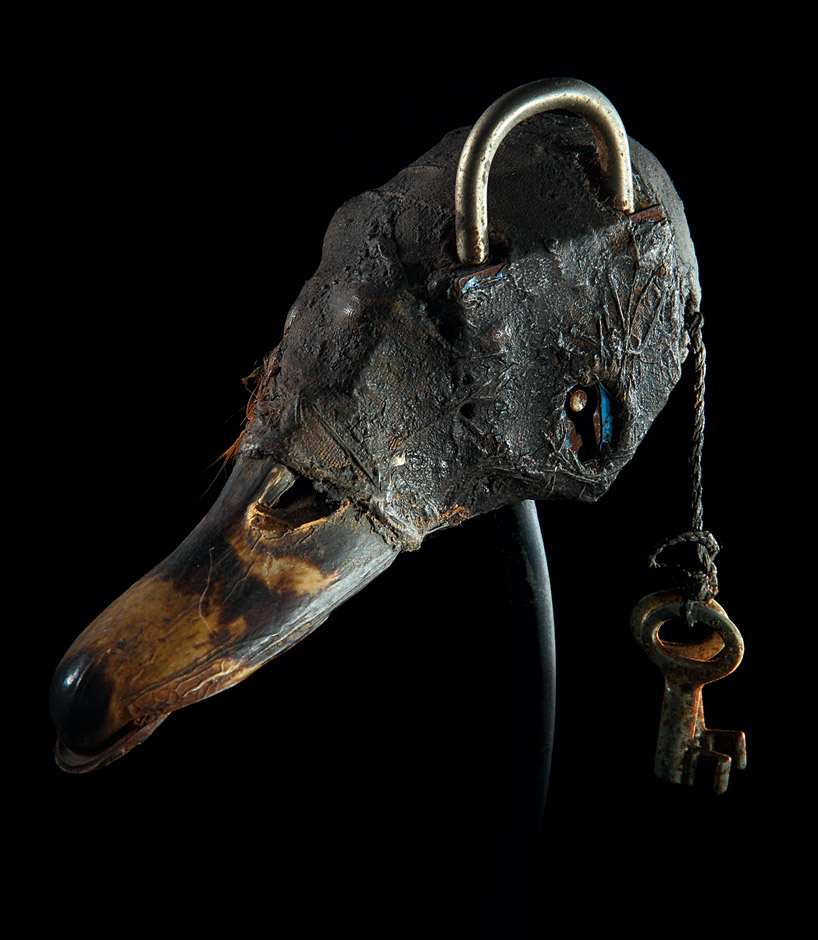
fon vodun object, benin (13.5 x 12 x 5 cm)
wood, duck skull and bill, lock, keys, cloth, feathers, clay, sacrificial patina
collection anne and jacques kerchache
photo © yuji ono
‘depending on the clan or family origins of the local informant, the statue will have different meanings and its attributions will be as variable as the homogeneity of the group observed. since myths change, the interpretation of a myth will also change. in this area, nothing is definitive. an object in africa is as mutable as the spoken word and african sculptures are a support for the word.’ jacques kerchache
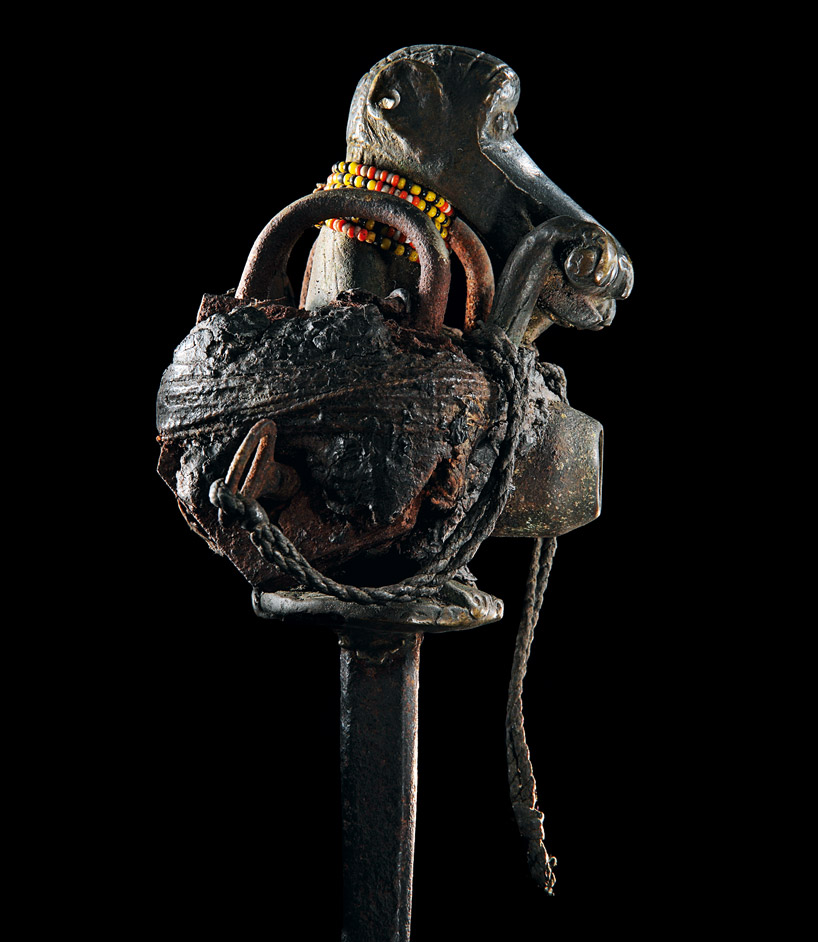
fon vodun sculpture, benin (19 x 7.5 x 6 cm)
bronze, rope, locks, key, mica, beads, clay, sacrificial patina
collection anne and jacques kerchache
photo © yuji ono
this little bronze monkey reminded jacques kerchache of a sculpture by picasso – ‘monkey and her baby’, 1952
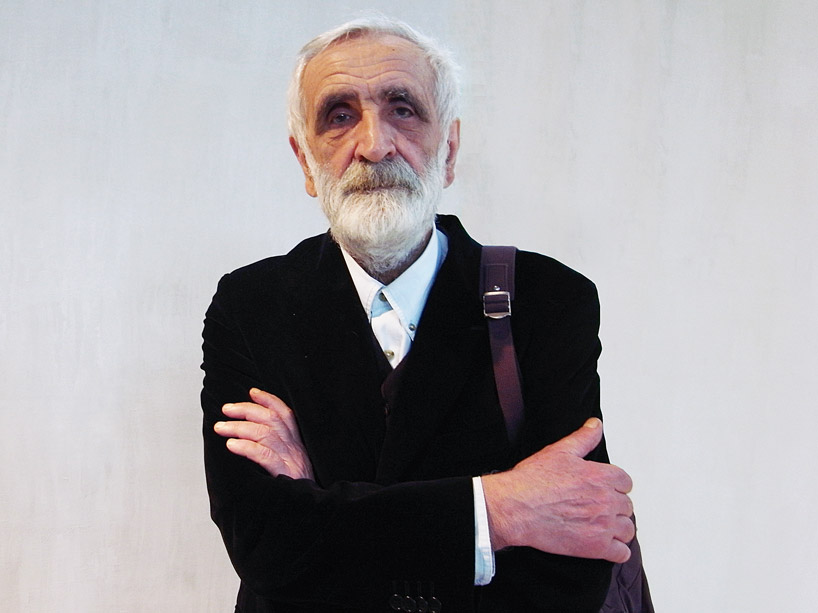
enzo mari
portrait © designboom
the scenography of the exhibition has been conceived by the italian designer enzo mari.
‘I often felt as if I were to plan an exhibition of medicine. in the same manner as I imagine a person from benin would investigate on our aspirin and penicillin. each of these objects has a curative, restorative function and these statuettes as well as their components function as a grammar. the rope, a recurring attribute, affects the part of the body it’s wrapped around, etc…each object is invested with a special power related to the different materials used by the vodun priests. I noticed that these statues are less interesting as objects of formal beauty than as objects of medicine.’– enzo mari
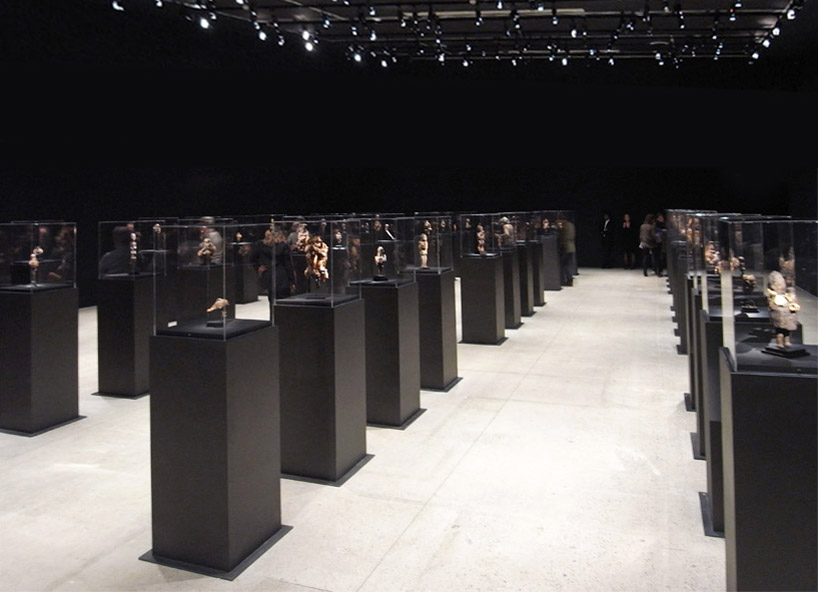
image © designboom
on the lower level there is a dark room with 48 columns. it is the most important room, where the visitor enters into the mystery found within the houses (see part 1 of our coverage – the village). while the use of these objects is unknown, we do know that they are remedies to improve life. ‘I thought it would be interesting to place all the smaller objects at eye level to avoid an accumulative effect.’ — enzo mari
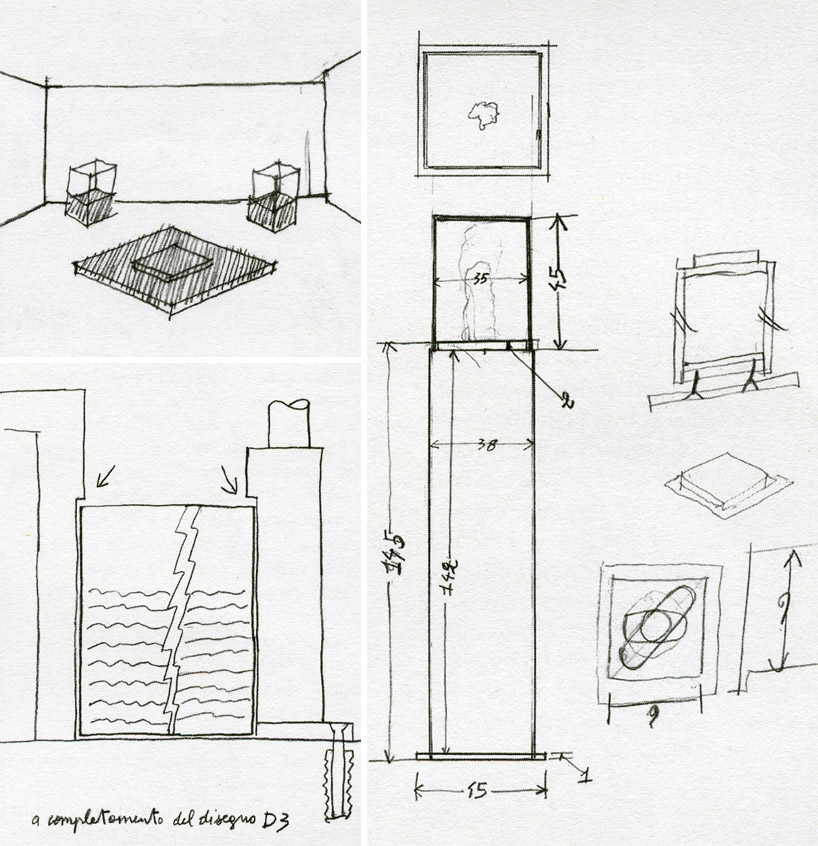
drawings by enzo mari
from left to right: the floorplan of the third room with two columns for bigger showcases and the water basin that sourrounds the carriage of death, a single column of the second room with 48 of them
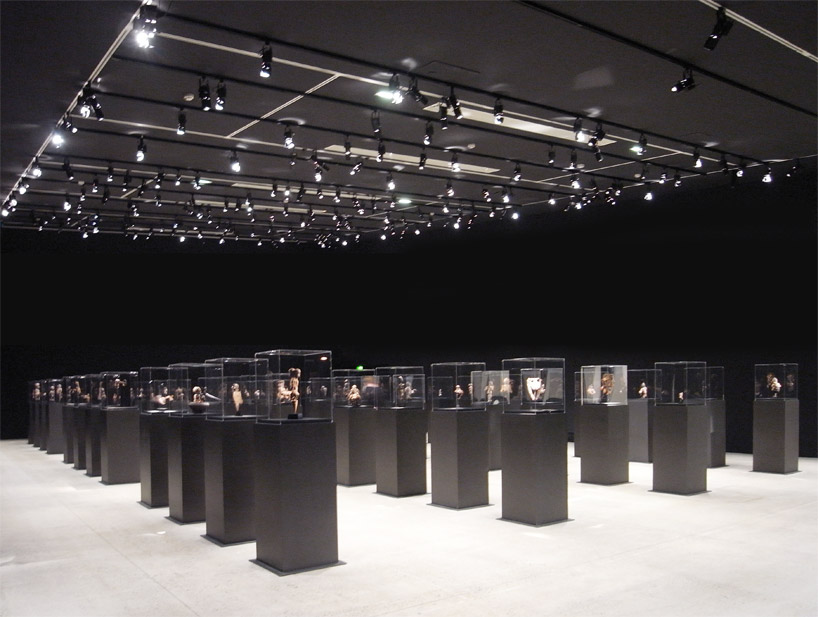
48 columns
image © designboom
then comes dreams, delirium, death and its allegory. in the third room on the lower level the chariot of death emerges from the dark waters of a basin, just as jacques kerchache had imagined the presentation of this work. ‘and this is how the journey of this exhibition, of imagination ends… it ends with death.’ — enzo mari
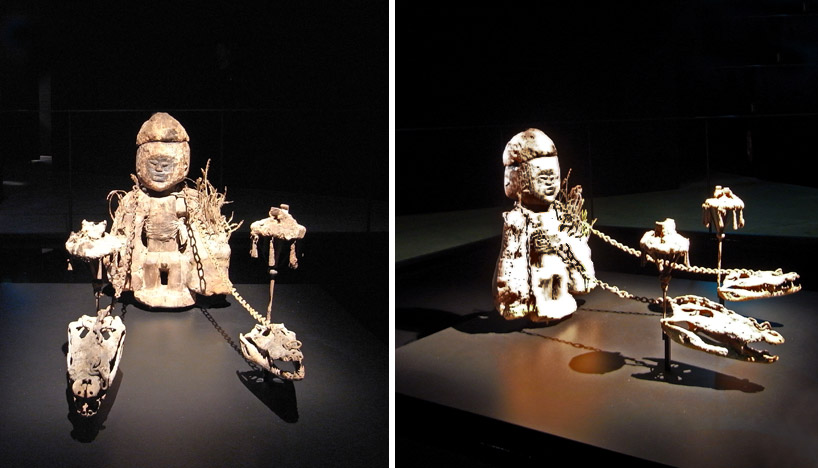
the ‘chariot’ / carriage of the death
images © designboom
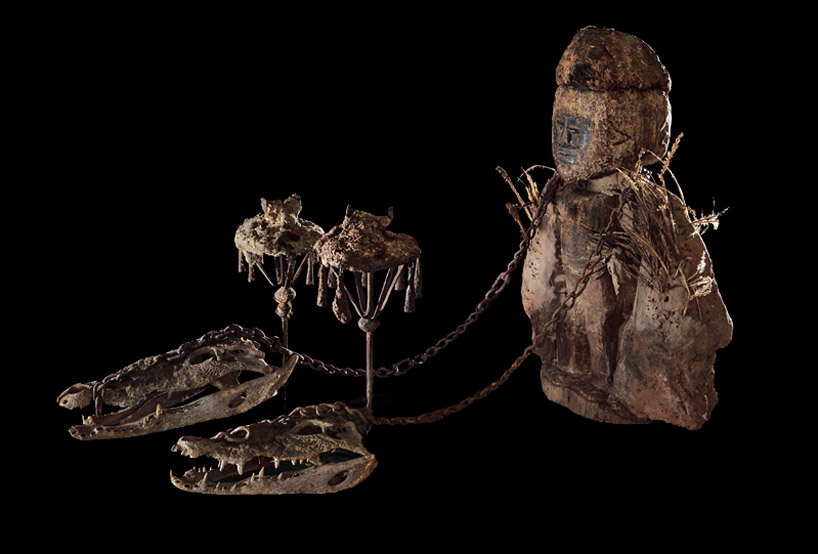
the carriage of the death
photo © yuji ono
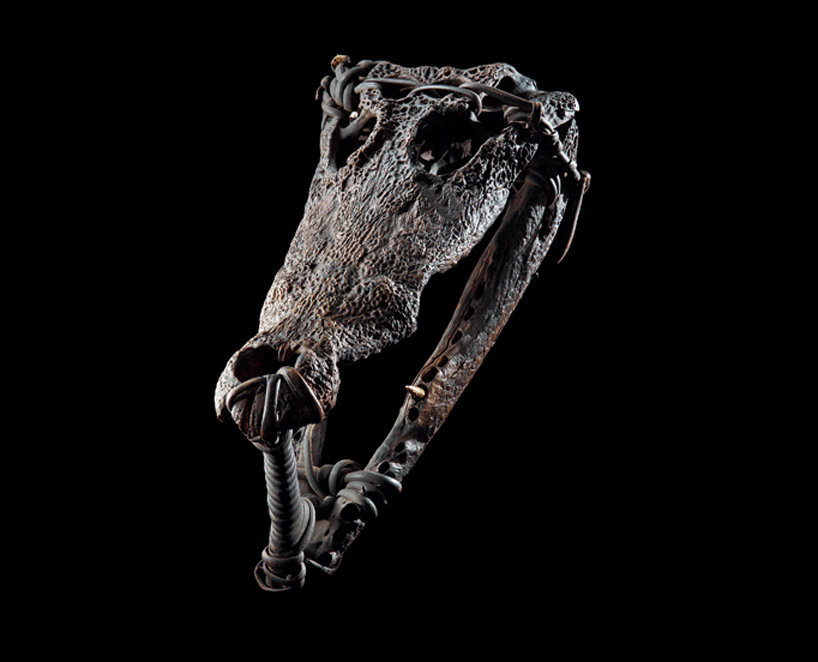
detail of the carriage of the death
photo © yuji ono
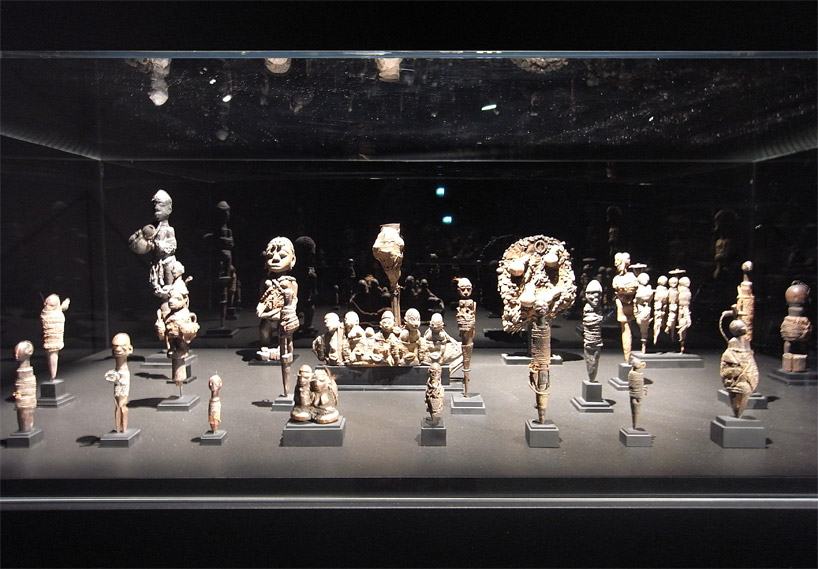
a showcase with bla-bocio (whose surface have been bound tightly with cord)
image © designboom
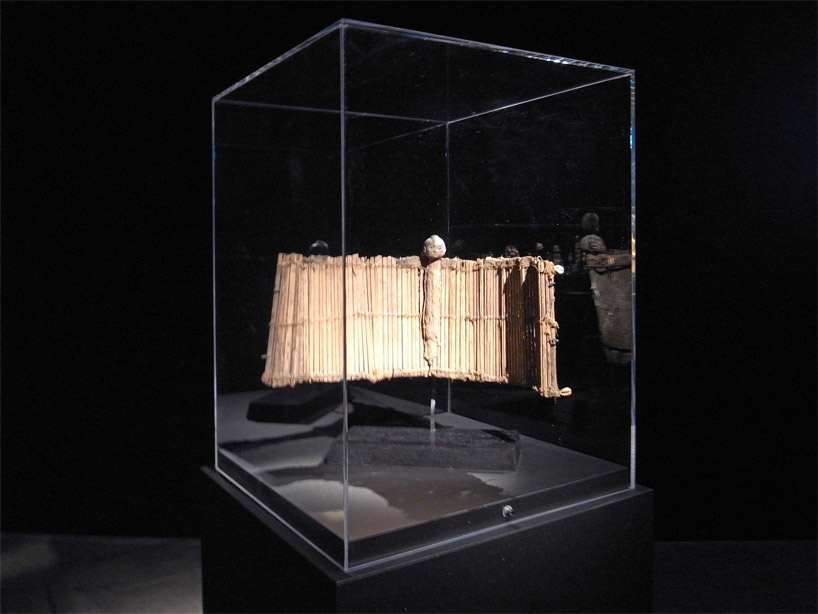
image © designboom
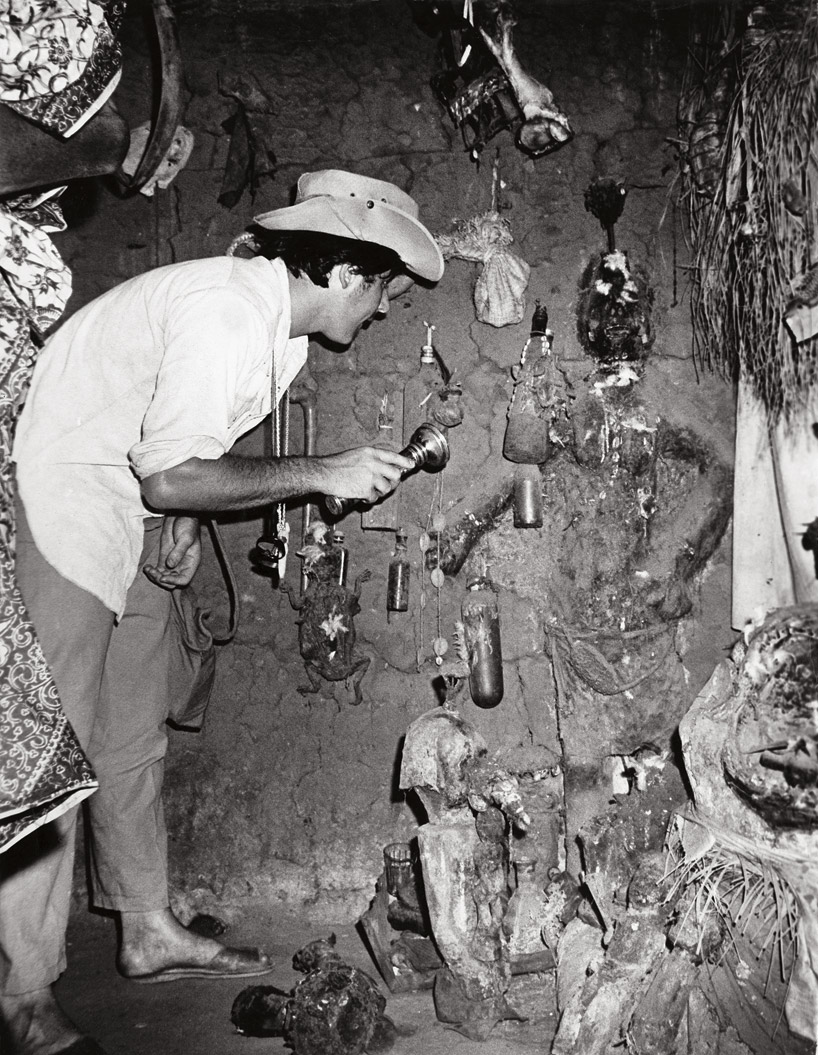
jacques kerchache
‘for the primitive arts and most notably for vodun, there is jacques kerchache and only him.’ andré malraux
an artistic advisor and curator of exhibitions, jacques kerchache was a strong advocate of the primitive arts, promoting their entry into important french museum collections. it was under his initiative that the pavillon des sessions was created at the louvre in 2001, as well as the musée du quai branly in 2006. jacques kerchache also collaborated with the fondation cartier on many occasions, first on the thematic exhibitions à visage découvert (1992) and être nature (1998) as well as on the solo show of the haitian artist patrick vilaire in réflexion sur la mort (1997).
following these collaborations, jacques kerchache and the fondation cartier considered organizing an exhibition on voodoo statuary, but this project was postponed after his passing in 2001. on the tenth anniversary of his death the fondation cartier uncovers the fascinating and secret world of voodoo that was jacques kerchache’s lifelong passion. through the vodun exhibition, the fondation cartier thus pays homage to this great expert and explorer known for his exacting eye, a connoisseur of both primitive and contemporary art.
a catalog published by the fondation cartier for the vodun exhibition benefits from the contribution of suzanne preston blier, gabin djimassé, marc augé and the haitian artist patrick vilaire.
—
please see also designboom’s first part of coverage of this exhibition and a video interview with enzo mari on the topic of ‘voodoo’, ‘medicine’, ‘tools of divine intervention’ and ‘beauty’. soon to be published.
general curators: anna douaoui, hervé chandès
curators: grazia quaroni and leanne sacramone, assisted by philippine legrand and anna milone
exhibition design: enzo mari
lighting design: julia kravtsova and vyara stefanova (conception), nicolas tauveron (realization)
